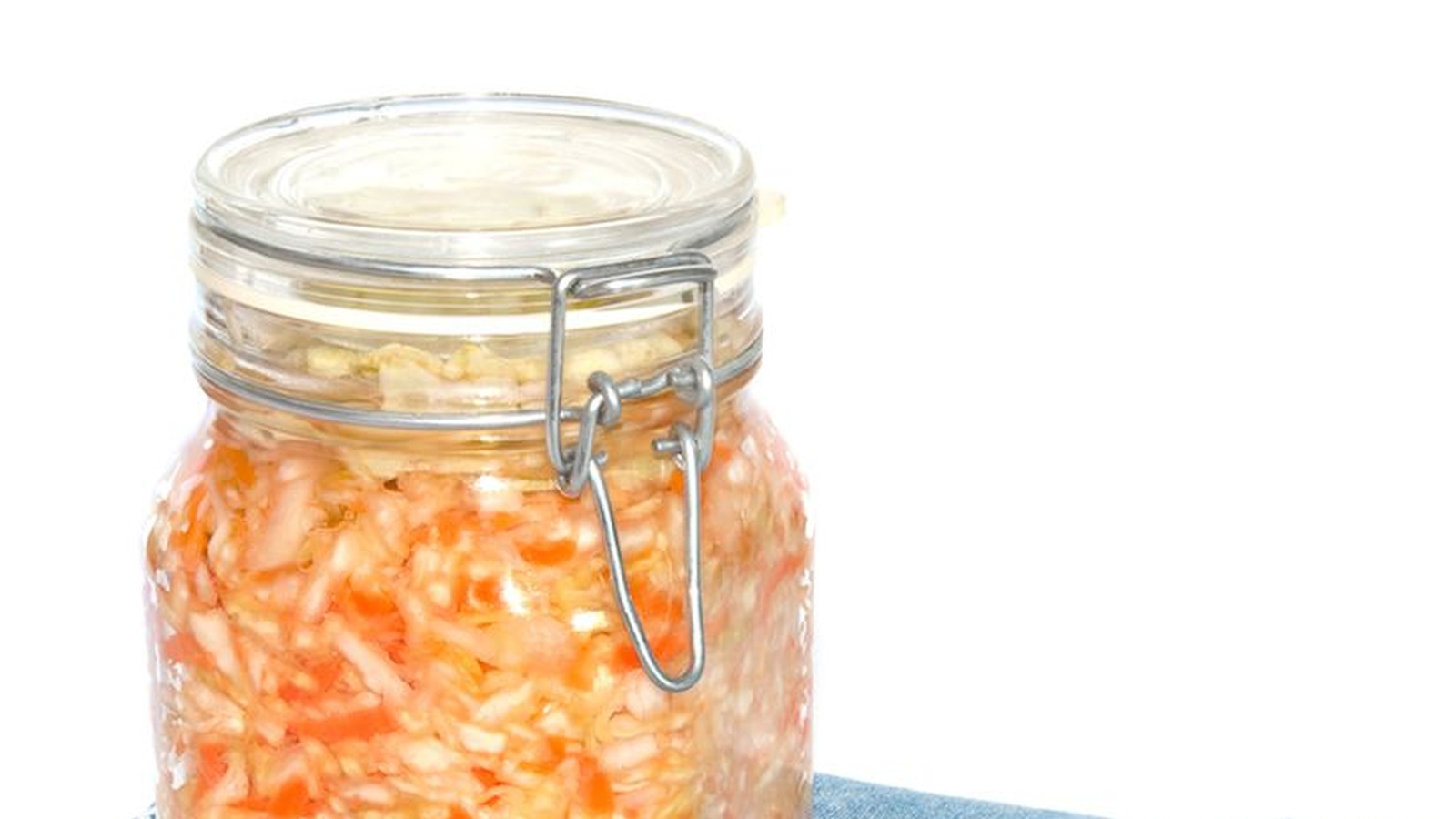7 Things You Need To Know About Fermented Foods
Recently, fermented foods like sauerkraut and kimchi have been making news, even though they are, in fact, anything but new – fermented foods have been around for thousands of years. For people living without modern medicine and refrigeration, fermentation has always been not only a simple means of food preservation, but also a way to imbue foods with health-promoting properties, an essential tool for maintaining the gut health.
Over the course of the last century however, fermented foods fell off most dinner plates; their medicinal effects wiped out by pasteurization, resulting in a dead-on-arrival food supply, stripped of the live bacteria the gut needs to stay in balance. Fortunately, though, there is a deliciously easy fix for this modern problem: incorporate more probiotic, fermented foods into your diet and put those live, good-for-you organisms back where they belong – in your gut!
Here’s a food-for-thought introduction to the health-boosting power of the fermented foods and how to get more of them into your daily diet:
1. Fermented Foods Help Fight Off Disease
It’s estimated that roughly 70% – 80% of your immune system is in your gut. Feed it poorly and your gut will be left with few defenses, easily overwhelmed by bad bacteria, wide open to disease-triggering inflammation and plagued by gastrointestinal ills like IBS-type symptoms (i.e., gas, bloating, constipation, diarrhea, etc.). In your weakened state, you may also be more susceptible to colds and flu. But, if you introduce good bacteria into the gastric mix via fermented foods, you’ll enable your gut to crush opportunistic invaders and disease-triggering inflammation, long before they can gain the upper hand. Simply put: A healthy, balanced gut can send illness packing.
2. Fill ‘er Up, Twice a Day
To fortify your gut, start incorporating small servings of fermented foods, once or twice a day. Toss fermented veggies like beets or sauerkraut into salads; enjoy them on their own; as a side dish or, if you’re feeling adventurous, consider adding a spoonful or two to your morning smoothie. I like adding a few fermented beet slices and a splash of beet juice to my berry smoothies, particularly on those days when I feel like my gut needs a boost.
3. Fermented Foods Can Save You Cash
Foods you ferment yourself can last for months, so there’s less waste, which helps save money in the long run. If you’re not the DIY type, commercially produced or store-bought fermented foods will also have a long, preservative-free shelf life, so they’re a pretty good deal too, even with the higher price. And did we mention that fermented foods also add great taste, nutrition and healthy bulk to every meal – so there’s less need to buy or eat insulin-spiking, low-nutrient filling foods like pasta, bread or potatoes.
4. They’re Alive – And They’re Busy
Fermented foods don’t just lounge around your belly doing nothing, they’re active! After you eat them, those bacterial armies get to work, helping to balance your gut bacteria and stomach acids; releasing enzymes to help ease and improve digestion – and make it easier for your body to extract and absorb more nutrients from the foods you eat. Another pleasant side effect of all that activity? Less constipation and easier elimination, drug and stimulant-free.
5. Go Ferment Yourself
While you can buy fermented products at most natural food stores and some supermarkets, fermenting is easy and inexpensive to do at home. You can ferment most edibles in the fruit and vegetable universe, but some come out better than others. So before you start, take a look some of the numerous blogs and books dedicated to the practice. Donna Schwenk’s book Cultured Food for Life: How to Make and Serve Delicious Probiotic Foods for Better Health and Wellness, is a great resource, as is Fermented Foods for Health: Use the Power of Probiotic Foods to Improve Your Digestion, Strengthen Your Immunity, and Prevent Illness, by Dierdre Rawlings, Ph.D., N.D.
6. Be A Smart Shopper – In Five Steps
If you’re not planning to “grow your own,” then here are a few pointers on what to look for when buying fermented foods. Your mission: to get the most active cultures for your buck. To do that, be on the lookout for:
- KEEP COOL: Fermented foods are full of live organisms that must be kept cool to survive, so buy only fermented items in the refrigerated section of the store
- IT IS WHAT IT IS: Fermented foods will, not surprisingly, have the phrase “fermented” printed somewhere on the label, so make sure it says so.
- PUT IT OUT TO PASTURE: Be sure the label does not say “pasteurized” – because the pasteurization process wipes out the cultures you need to help fortify your gut.
- FERMENTED AND PICKLED ARE TWO DIFFERENT THINGS: So don’t confuse the two – they’re not interchangeable. Pickled foods are exactly that – they’re pickled in liquids like vinegar or brine, but not fermented (unless it says otherwise on the label).
- BUY ORGANIC: Look for fermented foods that are made from the best raw materials possible, namely those made from organic, non-GMO or locally farmed produce.
7. Get to Know The Classics
So what to buy or make yourself? Try a variety of fermented organic veggies and fruits – the possibilities are endless. Among the more popular ones to work into your daily diet:
Fermented beets, radishes, tomatoes, onions, garlic, kimchi, green beans and sauerkraut.
Condiments that have been fermented (either at home or commercially), such as ketchup, relish, salsa, chutney and hot sauce make great meal-time add-ons.
For dairy-eaters, fermented yoghurts, kefir, cultured buttermilk and some cheeses are good options. Non-dairy eaters can try fermented yoghurt made with coconut milk as a tasty alternative.
And while natto, miso, tempeh, tofu and soy sauce are popular fermented foods, generally I advise my patients to avoid them as they tend to be heavily processed and are usually made with GMO soy.
What Health Benefits Have You Experienced From Fermented Foods?

Do you have a passion for nutrition & natural healing?. Learn more about the Food Matters Nutrition Certification Program here.

